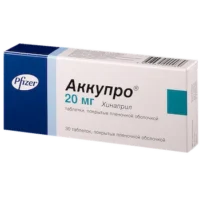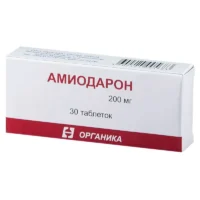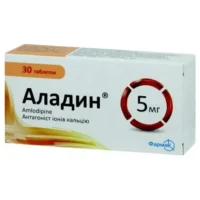Description
Geparin-Novofarm 5000 IU 5 ml Vial №5
Composition
Geparin-Novofarm contains 5000 IU of heparin sodium in a 5 ml vial.
Mechanism of Action
Pharmacological Properties: Heparin enhances the activity of antithrombin III, an endogenous inhibitor of coagulation factors. This leads to the inhibition of thrombin and factor Xa, crucial components in the clotting cascade.
Indications for Use
Indications: Geparin-Novofarm is indicated for the prevention and treatment of conditions such as deep vein thrombosis, pulmonary embolism, and clotting during surgical procedures.
Contraindications
Contraindications: Avoid using Geparin-Novofarm if you have hypersensitivity to heparin or any of the ingredients. It is contraindicated in patients with uncontrolled bleeding disorders.
Side Effects
Side Effects: Common side effects may include bleeding, bruising, and localized skin reactions. Consult a healthcare provider for a complete list of possible side effects.
Usage Instructions
Dosage and Administration: The recommended dosage of Geparin-Novofarm should be determined by a healthcare provider based on the individual’s condition. It is typically administered subcutaneously or intravenously under medical supervision.
Benefits Compared to Analogues
Benefits: Clinical evidence supports the efficacy of Geparin-Novofarm in preventing thrombotic events. Studies have shown its superior efficacy in reducing clot formation compared to other anticoagulants.
Suitable Patient Groups
Patient Groups: Geparin-Novofarm can be used in various patient populations, including adults, children, and the elderly. Dosage adjustments may be necessary based on individual patient characteristics.
Storage and Shelf Life
Storage: Store Geparin-Novofarm as per the instructions provided on the packaging. Check the expiration date before use and do not use expired products.
Packaging Description
Packaging: Geparin-Novofarm is available in 5 ml vials for single-use administration. Each package contains a specific number of vials as indicated on the label.
Clinical Evidence and Proven Effectiveness
Scientific Evidence: Studies have demonstrated the anticoagulant properties and effectiveness of Geparin-Novofarm in preventing thrombotic events. Research has shown its comparable efficacy and safety profiles to other heparin products, supporting its clinical use.





